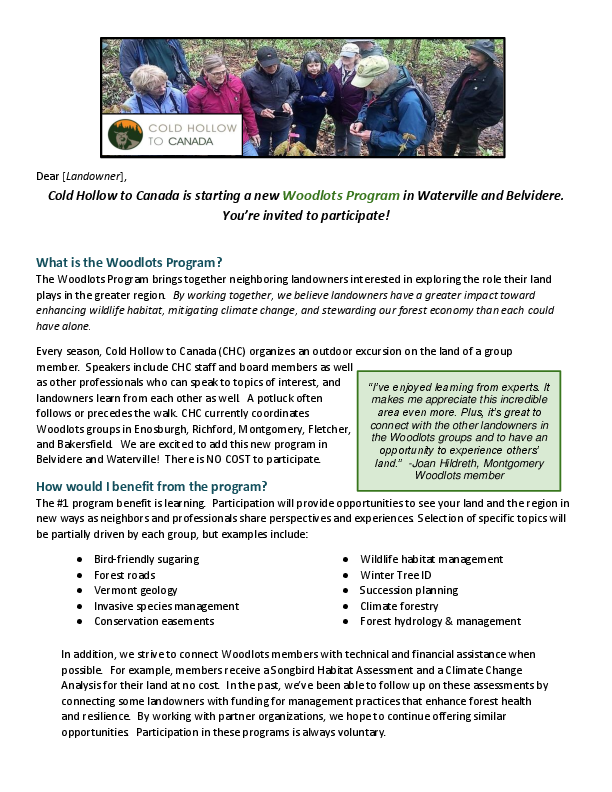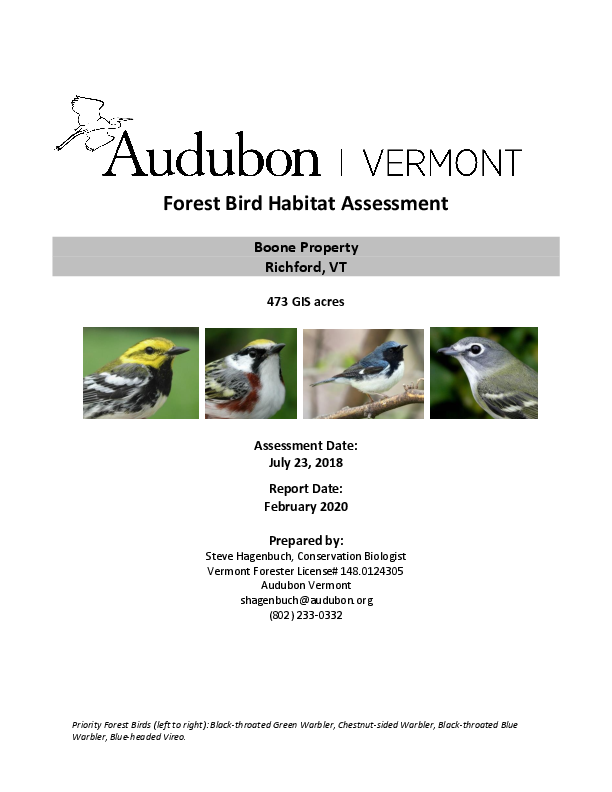How To Set Up a Program
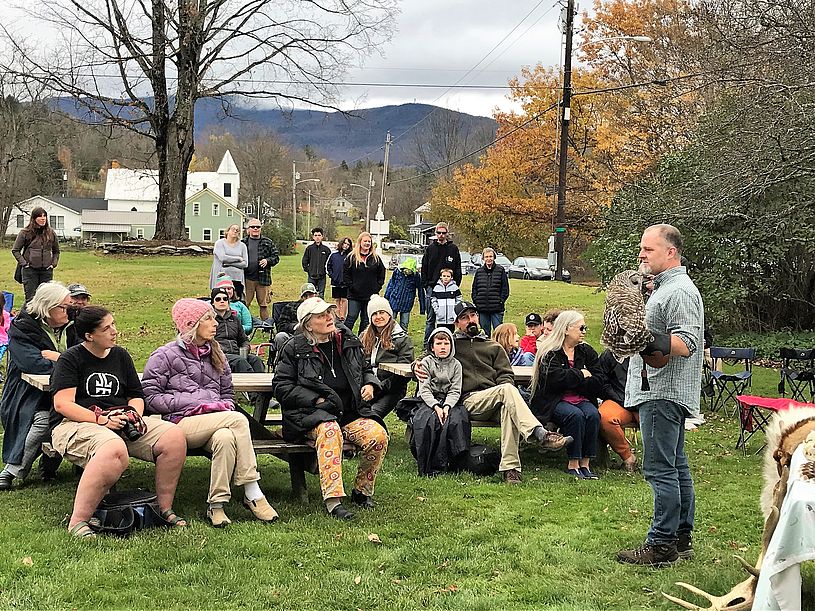
Photo by Monica Przyperhart
A Step By Step Guide
Step 1: Get to know your community
Even before you start a Woodlots Program, it’s important to understand the community context in which the program will occur. Do what you can to build relationships. Understand who’s who among community groups and how they interact/relate to one another. Build trust.
This can be done in different ways. Cold Hollow to Canada has deep roots in the community, but even so, we conducted a series of outreach events prior to starting our newest programs, so that we could give something to the community as a whole before working with a select group of landowners. We also reached out to Conservation Commissions and Planning Boards to let them know who we were and what our goals were, and we asked for their feedback and ideas for the program. This allowed us to create a program that fit in with the greater needs of the community, and it also allowed us to get to know a few of the individuals who might be involved–and gave them a chance to get to know us!
At this point, CHC also reaches out to some landowners who we suspect will be particularly engaged participants, letting them know about the program. Through these connections, we can learn more about their potential interest, understand any concerns they may have about the program, and (hopefully) get them excited about it! In this process, we are also looking for a potential host for Step #5!
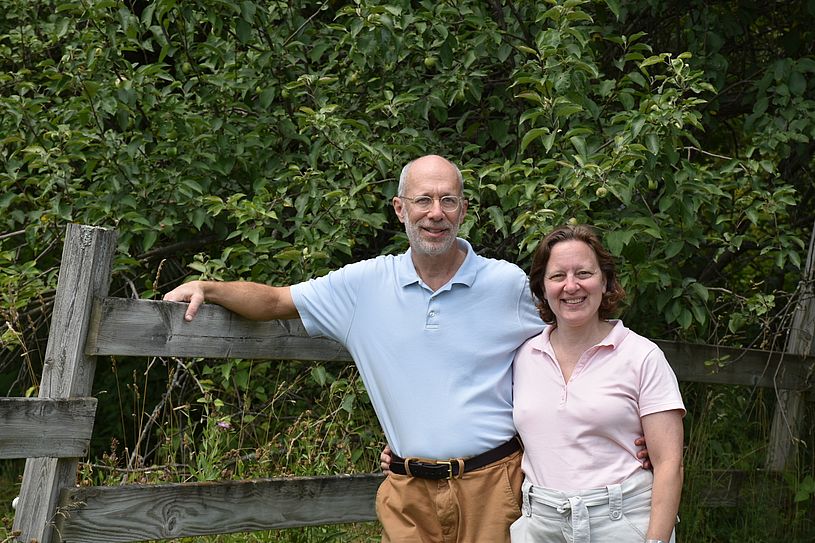
Step 2. Select potential landowners for Woodlots Group.
For this, Cold Hollow to Canada began with maps. The Vermont Agency of Natural Resources has created a resource called Vermont Conservation Design, which highlights the areas of highest priority to maintain as interior forest and for habitat connectivity. CHC has further identified locations in which wildlife are most likely to cross between these forest blocks. This network provided a backdrop upon which to work.
Using these forest blocks and connecting areas as a basis, we identified parcels with at least 50 acres of forest. We then checked these for enrollment in Vermont’s Use Value Appraisal (Current Use) Program. For us, this was an indication that landowners are interested in maintaining the land as forest and are active stewards of their land.
For the most part, this became our invitation list. In a few cases, landowners who had just shy of the 50 acre cut-off but who we knew would add valuable perspectives to a group were added.
Step 3. Send out letters inviting landowners to participate.
Invitation letters include a brief description of the program and several options for participation. Make it clear to landowners what the program requirements are and what is expected of them.
We also recommend that you follow up letters with personal emails or phone calls. People get a lot of junk mail. We like to try a mailing to get initial word out and let people begin to sit with the idea of a program. Personal contact generally gains more traction, though. You may also try engaging other community members or service providers like foresters to encourage people to join, so that word of the program comes from a known entity.
Step 4. Have an introductory “Meet and Greet.”
Because we rely on landowner participants to host the “regular” gatherings, we like to have an initial, very casual opportunity for potential participants to learn about the program in a neutral setting. This takes a bit of pressure off of the first host. This can be in a public location, such as at a community center or school, or for some audiences it can be virtual. Don’t expect everyone to attend, but this can be a chance for potential participants to ask questions and simply pop in to say “hello” without feeling they are committing to anything for the long term. While we never require a long-term commitment from participants, this gives us a chance to see who is interested. We collect emails at this time so that we can keep track of those who would like to hear about upcoming gatherings and activities. You might find a handout helpful.
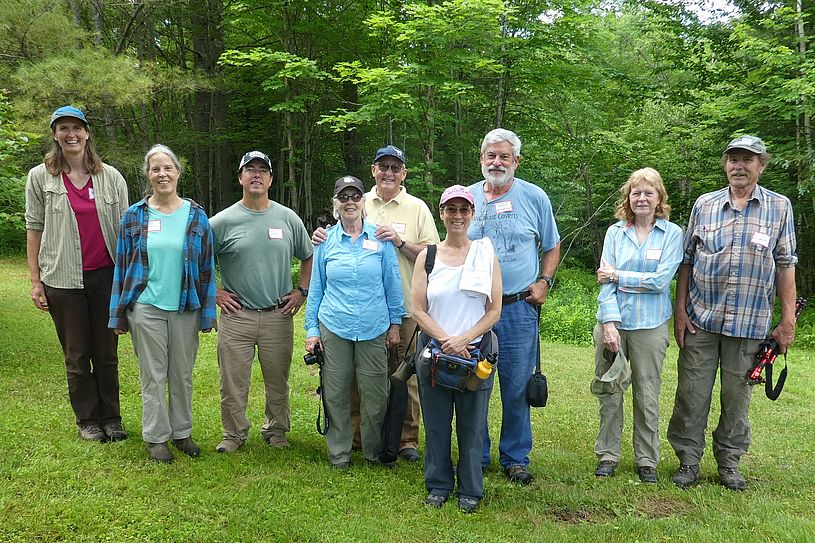
Photo by Nancy Patch
Step 5. Set up a first “real” gathering.
Unlike in Step 4, this gathering will have a landowner participant who is the host. Hopefully by now, you have made connections with one or two landowners who you suspect will be particularly involved. Reach out to them at this point (if not before) to gauge their interest in hosting a gathering.
While you can see more in the “Running the Program” section, it’s important to note that hosting can take various forms. The most basic type of hosting simply entails allowing the group to meet on and walk the property. However, we also like to arrange potlucks or food-sharing experiences when possible, that come before or after a Woods Walk. Some “hosts” are happy to have participants join them inside their homes. Some opt for a “bring your own lawn chair and a dish to share” type of potluck. Sometimes we have bring-your-own-bagged-lunch events.
In any case, this first “real” gathering serves two purposes: to allow participants to get to know one another, and to go on a first walk through the woods!
To get to know one another, we actually have everyone start by filling out a survey about their management goals, activities, and interests. We can then discuss our answers together as a “get to know you,” adding in elements of fun without putting any individual on the spot. We then go for a guided walk in the woods. For CHC, the first gathering is generally led by either the County Forester or the property’s consulting forester, who is familiar with the property and management goals. They can then lead the program content, leaving the landowner to share what they would like without needing to speak in front of the group (unless they would like to!).
Step 6. For each landowner, set up Songbird Habitat Assessments and Climate Change Analyses–or other resources!
After the first gathering, you will likely have a better idea of who is likely to continue engaging with the program. For these, you can begin to set up the resources that you can give back to landowners. (For more information about what we provide and why, please see the Programming section of this Toolkit.)
Step 7. Plan future gatherings and topics!
At this point, you will likely have a solid sense of your group, and you are the expert. What would these individuals like to learn? Who are the resources in your area who you could invite to join you? You might poll your group to get a list of potential topics/speakers, think about ways to work toward your goals, or contact partner organizations to see if they're willing to join you for a walk. At this point, you can take this where you (and the group) would like it to go!


